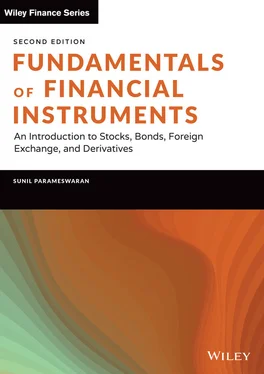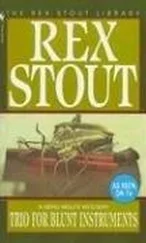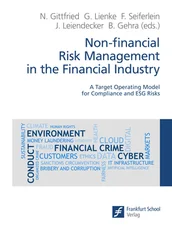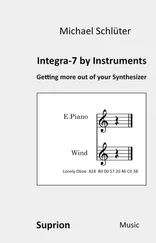Eurobonds offer favorable tax status. They are usually issued in bearer form, that is, the name and address of the owner are not mentioned on the bond certificate. There are two broad categories of securities: registered securities and bearer securities. In the case of the first category a record is maintained of the owners at any point in time, by an entity known as a registrar or share transfer agent. Each time the security is transferred from one investor to another, the records are updated; however, in the case of bearer securities, physical possession is the sole evidence of ownership. These securities are like currency notes. If one were to drop a hundred dollar bill on the floor, it is impossible to prove that it belongs to us. Such securities are easier to transfer and offer investors the potential freedom to avoid and evade taxes. Thus, holders who desire anonymity can receive interest payments from such securities without revealing their identity. Also, interest on Eurobonds is generally not subject to withholding taxes, or tax deduction at source.
Because of their unique features, investors are willing to accept a lower yield from Eurobonds than from other securities of comparable risk, but which lack the favorable tax status.
Eurobonds are not usually registered with any particular regulatory agency but are, however, listed on a stock exchange, typically London or Luxembourg. Listing is done not so much for the purpose of facilitating trading, but to circumvent restrictions imposed on certain institutional investors like pension funds, which are prohibited from purchasing unlisted securities. Most of the trading in Eurobonds takes place OTC.
GLOBALIZATION OF EQUITY MARKETS
Compared to debt markets, equity markets have been relatively slow to globalize. However, the winds of change are blowing across the world and markets are increasingly becoming modernized as well as integrated. The doctrine of LPG – Liberalization, Privatization, and Globalization – is gaining currency across the world. New developments in communications technology, coupled with deregulatory changes, and greater awareness of the benefits of international portfolio diversification on the part of investors, have led to rapid integration of equity markets in recent years. Some of the major deregulatory measures in the past two decades are the following:
On 1st May 1975, the United States abolished fixed brokerage commissions.
In 1985 the Tokyo Stock Exchange started admitting foreign brokerage firms as members.
In 1986 the London Stock Exchange (LSE) eliminated fixed brokerage commissions and began admitting foreign brokerage houses as full members. This event is known as the “big bang” in financial circles. These changes were designed to give London an open and competitive international market. Until the end of World War II, London was the center of global financial activity. For obvious reasons, the center of postwar economic activities moved across the Atlantic to New York. London is, however, critical for global financial activities, for it lies in an ideal time zone. The city is located in between the capital markets of North America and those of Singapore and Tokyo. Consequently, it is the middle link for what is effectively a 24-hour market.
In 1987, financial institutions in London were permitted to participate in both commercial and investment banking.
In 1999 the Glass-Steagall Act, which sought to segregate commercial and investment banking activities in the United States, was repealed. The Act was a product of the Great Depression and sought to insulate commercial banks from the vagaries of the stock market. Once this Act was enacted, institutions were given a clear choice. Either they could accept deposits and make loans, or they could provide underwriting and broker-dealer services. Thus, US institutions in the business of deposit taking and loan making were precluded from trading and market making in securities. For instance, Morgan Stanley was formed as a splinter from JP Morgan. While JP Morgan continued as a commercial bank, Morgan Stanley went into the areas of securities dealing and investment banking. In 1999 the Financial Services Modernization Act, known as the Gramm-Leach-Bliley Act, did away with this restriction and paved the way for giant financial conglomerates who could undertake both investment banking as well as commercial banking activities.
Dual or multiple listing allows the shares of a company to be traded on the exchanges of many different countries. Foreign equity is traded in global markets, in the form of Depository Receipts (DRs). On the US exchanges, they are traded in the form of American Depository Receipts (ADRs). Such securities are special shares of foreign equity that are priced in US dollars. The issuance of such assets facilitates the ownership of foreign equity by American residents. An ADR is essentially a receipt issued by a depository bank in the United States that is backed by foreign shares that are deposited with a custodian bank in the country of issue of the original shares. ADRs are quoted and traded in US dollars just like domestic US shares.
The mechanism of issuing ADRs is as follows. A US depository bank will acquire shares of the foreign company in its domestic market. These shares will then be deposited with a local custodian bank in the foreign country. The US depository bank will then issue ADRs to the investors in the United States, where each ADR will correspond to a specified number of foreign shares.
Shareholders receive dividends in US dollars. The depository takes on the task of collecting dividends in the foreign currency, converting the dividends to dollars, and making payments.
An ADR may represent either a fraction or a multiple of the underlying shares, packaged in such a way that it will trade at the appropriate price range in the United States. This can be illustrated with the help of an example.
Take the case of a company based in India that is being traded at INR 60.00 per share, at a time when the exchange rate is INR 75 per US dollar. If an ADR were set to be equal to one Indian share, it will trade for approximately 80 cents in the United States. In order to ensure that the ADRs trade at a more respectable price, one ADR may be made equivalent to 10 domestic shares, thereby ensuring that it trades at approximately $8.00.
On the other hand a share may be trading at a very high price in its home country. For instance, if a share is trading at INR 37,500 in India, it will trade at approximately $500 in the United States, assuming a 1:1 issue ratio and an exchange rate of INR 75 per dollar. In such circumstances one ADR may be set equal to 0.05 Indian shares, thereby ensuring that it trades at approximately $25 in the United States.
The ADR market is growing from the standpoints of both supply as well as demand. Foreign companies are being increasingly attracted to the US market for it is the largest in the world and is arguably the most efficient. Unlike other nations, the United States presents fewer barriers to entry. Compared to other countries the United States has more High-Net-Worth Individuals (HNWIs) who are not only better endowed financially, but are more aware of the benefits of international diversification and willing to take the attendant risks.
Although an American investor can always acquire a share that is traded on a foreign stock exchange, it is a lot simpler in practice to invest in an ADR. There is no need to locate a foreign broker or be conversant with the systems and practices of a foreign stock exchange and its related institutions. Besides, acquiring a foreign security will expose the investor to exchange rate risk. In most countries reporting standards are not as stringent as those prevalent in the United States. Consequently, companies abroad are able to get away with less disclosure, which may not be adequate for an American. A practical difficulty from the standpoint of trading foreign shares is that such transactions can be undertaken only when the overseas market is open, and the timings of these trading venues usually do not overlap with American market hours.
Читать дальше












